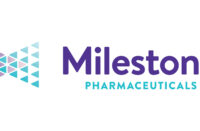The bioresorbable stent was approved for use by the FDA in July of 2016. The Absorb GT1 Bioresorbable Vascular Scaffold System, manufactured by Abbott, was all set to solve a litany of the problems inherent with conventional cardiac and vascular stents.
Conventional stents, made of flexible metal can create a situation where blood clots and scar tissue formed increasing the possibility of stent failure and restenosis, followed by a sequelae of other complications. Drug eluting stents were and are an improvement over traditional stents as they slowly emit medication that prevents cell proliferation, thrombosis, and reduces failure.
For more than a decade, Abbott developed the stent made of a bioabsorbable plastic which dissolved back into the bloodstream after its work was done. By the time the device received FDA approval, it was already in use in over 100 countries with over 125,000 placements. So, how then could the safety concerns related to the device seemingly pass under the radar of the FDA?
Timing is Everything, in Perspective
It seems that part of the problem is operator error and the other part of this failure is timing. At least some of the late failure data, prompting Abbott to pull the stents from the European market is from the first studies that were conducted before the learning curve was realized. For example, across the cohort early-on, the stents were implanted around 20 percent of the time into very narrow arteries. Furthermore, less than 50 percent of these patients received pre-dilation of the vessels and fewer only 12 percent received adequate post-dilation.
Recently, it has come to light that various implantation techniques were used which were not consistent with the best practice guidance issued by Abbott. Interestingly, the target lesion failure rates and incidence of device thrombosis coincide with some of these numbers.
“At 3 years, the rates of TLF and definite/probable scaffold thrombosis were 10.8% and 2.7%, respectively,” says lead investigator Gregg Stone, MD of Columbia University Medical Center
The Importance of Device Manufacturer Education Programs
The Absorb stent is just one example highlighting the importance of education programs within the clinical environment. Training must be carried out by suitably qualified reps who have been deemed competent by the product manufacturer.
But knowing that Abbott has a rigorous training program it seems unlikely that the interventionalists in question were not offered adequate training. What it does bring to the forefront are the challenges that these device educators and sales representatives face. Due to liability, the role of educator in a deemed “theater of operation” is increasingly limited.
We recognize that in modern medicine, we cannot carry out the job we do without assistance of a vast range of medical devices and advanced technical equipment. However, medical devices are only as effective as the person in charge of them.
Our strategy focuses on enabling our clients to recruit the right people for the structure in which they will perform. Please contact us to learn more about our expertise in Executive Search for Commercial Leadership positions in Medical Device and Biotechnology; including Marketing, Strategy, Sales Leadership, Training, Development, etc. We look forward to the opportunity to help you consistently improve your performance and your business!
Twitter: @PrimeCoreSearch
Email: ken@prime-core.com






